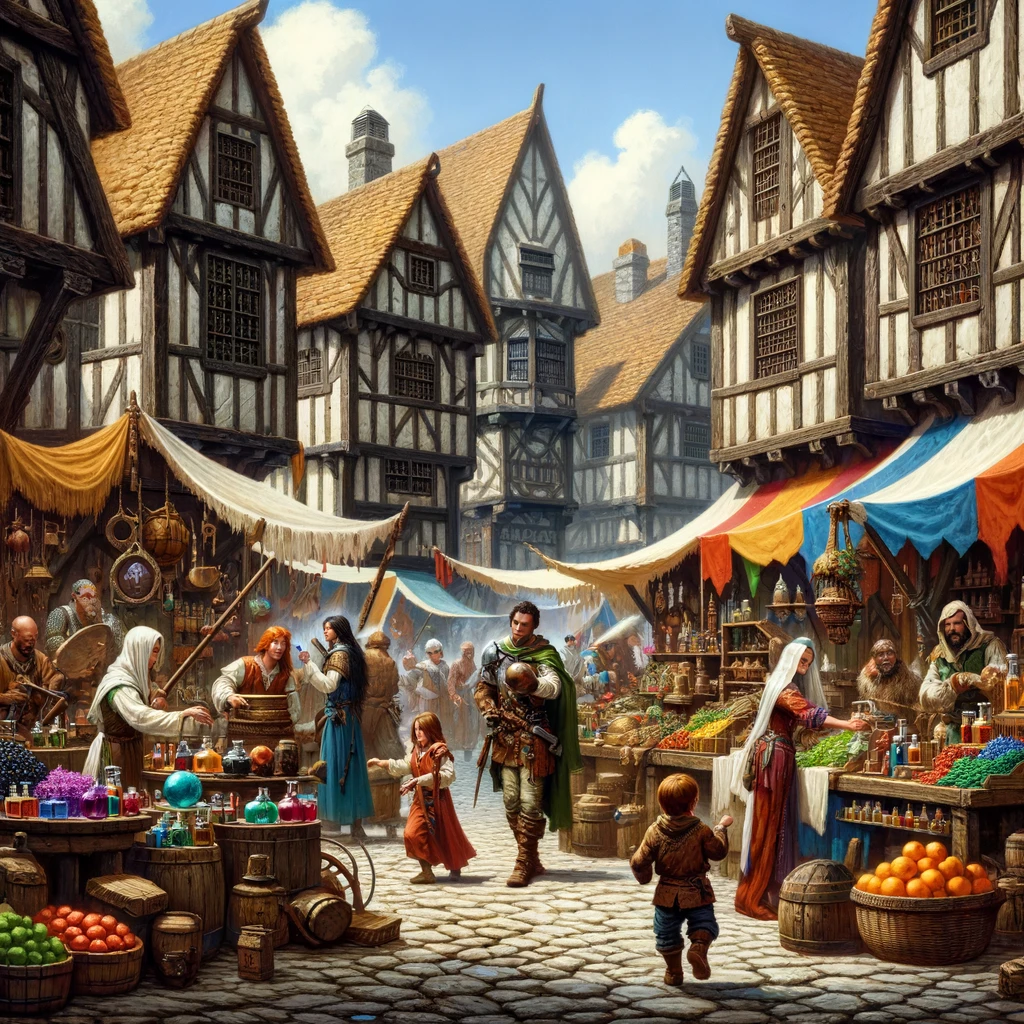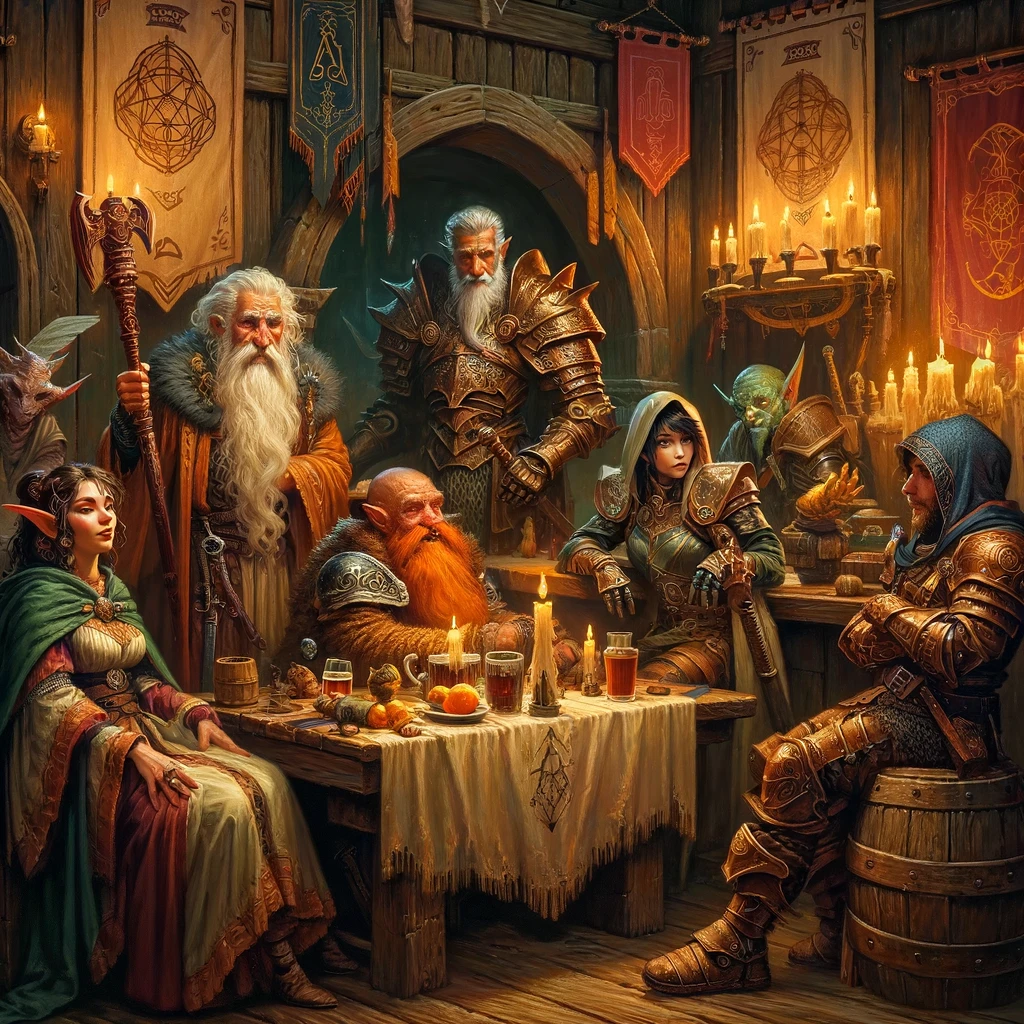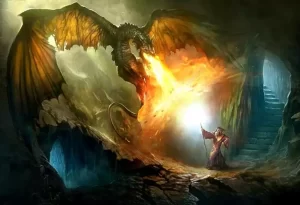
Non-Player Characters (NPCs) are the backbone of any great Dungeons & Dragons (D&D) or Pathfinder 2nd Edition (Pathfinder 2e) campaign. They give the world depth, offer players allies and adversaries, and drive the plot forward. Crafting memorable NPCs is not just about filling a role in the story, but about creating beings that your players will remember long after the session ends. This article explores how to craft NPCs that enhance the storytelling and engagement in both games.
NPCs serve as the vital threads that weave the tapestry of the narrative together. They are not merely bystanders in the adventures of the players but are active participants who react dynamically to the unfolding events. For example, a seemingly unimportant villager might return later in the campaign with a crucial piece of information or a request for help that leads to a whole new quest line. This interconnectedness ensures that the NPCs feel integral to the story rather than disposable additions.
Moreover, effective NPCs can profoundly impact the emotional landscape of a campaign. They can become beloved friends, feared enemies, or complex characters with morally grey qualities that challenge the players' perceptions and choices. Through these interactions, NPCs become a vehicle for delivering the themes and moral questions inherent in the campaign's narrative, enriching the player's experience and deepening their engagement with the game world. Such characters not only enhance the narrative but also encourage players to invest more deeply in the role-playing aspect of the game, leading to richer and more memorable gaming sessions.
Understanding NPC Roles
Before diving into the specifics of creating an NPC, it's important to understand their potential roles in your campaign. NPCs can be:
- Allies: Guides, mentors, or sidekicks who assist the players.
- Antagonists: Villains or rivals who oppose the players.
- Quest Givers: Characters who propel the story by providing goals or information.
- World Builders: Everyday inhabitants who enrich the game world's authenticity and depth.
Each role serves a different purpose in your story and should be crafted with that purpose in mind.
Design Principles for Memorable NPCs
Strong Motivations: Every NPC should have clear motivations that are evident in their behavior. Motivations not only drive NPC actions but also make them relatable to the players. Whether it's the barkeeper who dreams of owning the largest tavern in the land or a vengeful ghost haunting an ancient battlefield, their desires should shape their interactions with the players.
Distinct Voice and Mannerisms: Giving your NPC a unique way of speaking or a quirky mannerism can make them instantly more memorable. Perhaps your scholarly mage speaks in elaborate, flowery sentences, or your rogue has a habit of flipping a coin when nervous. These small details can make NPCs feel more real and distinguishable.
Backstory with Depth: While not every NPC needs a complex history, key figures in your campaign should have backstories that influence their current desires and conflicts. This history doesn't need to be exhaustive but should provide enough depth to inform their behavior and to provide hooks for future interactions.
Appropriate Complexity: The depth of character development for an NPC should match their importance to the story. Major characters warrant more detail, while simpler personas can suffice for those the players might only meet once or twice.
Techniques for Both D&D and Pathfinder 2e
While D&D 5e and Pathfinder 2e have different mechanics, the principles of NPC creation are compatible across both games:
Utilize Game Mechanics Creatively: Both games offer a variety of races, classes, and abilities that can define NPCs. For instance, a Pathfinder 2e NPC might use the unique feat system to highlight a special skill or past experience, while a D&D NPC might showcase a rare magical item or a mysterious subclass.
Incorporate Setting Elements: Use the rich worlds of both games to inform NPC creation. An NPC in D&D's Forgotten Realms might have direct ties to one of the magical schools or a significant event like the Time of Troubles, whereas a Pathfinder NPC could be deeply involved in the politics of the Starstone or the intricate lore of ancient Thassilon.
Interactive Goals with the Players: NPCs should have goals that can align or conflict with player objectives, creating opportunities for collaboration, betrayal, or rivalry. This interaction drives forward the narrative and deepens the players' investment in the world.

Enhancing NPC Creation with Class, Gear, and Stats
1. Class and Abilities: Choosing a class for an NPC isn't just about their combat abilities; it's about defining their role in the world and their relationships with other characters. For instance, a cleric could be a community leader whose faith is tested in difficult times, while a rogue might be a spy whose loyalties are unclear. Each class comes with specific abilities that can shape their behavior and how they interact with the players. For example, the spells a wizard has access to can hint at their past adventures, their studies, or their ambitions.
2. Gear and Weapons: The gear and weapons an NPC carries tell a story about their past and their daily life. A sword with a family crest can hint at noble blood or a stolen heritage. A backpack filled with maps and scrolls might belong to an explorer, hinting at far-off places the party might one day visit. The state of their equipment also gives clues about their lifestyle; well-maintained gear might suggest professionalism or pride, while battered and mismatched equipment could suggest a hard life or a focus on practicality over appearance.
3. Stats and Challenge: While the players might not see the stats of an NPC, these figures play a crucial role in defining how an NPC can handle themselves in conflict situations, be it combat or a high-stakes negotiation. Stats should reflect the NPC's background and skills. For example, a charismatic bard who manipulates town politics would have a high Charisma score, while a seasoned warrior would have high Strength or Dexterity. These stats not only determine the practical aspects of encounters but also help the Dungeon Master (DM) keep interactions consistent with the NPC's capabilities.
4. Integrating NPCs into the Game: To ensure NPCs have a meaningful impact, integrate their class, gear, and stats into the gameplay and narrative. Let their capabilities influence the plot; perhaps the party needs the specific skills of that NPC rogue to plan a heist, or the NPC cleric's healing abilities are key to surviving an undead infested area. Additionally, consider how an NPC's gear or class might make them a target or an asset in the political landscapes of the game world.
Consider
Creating memorable NPCs is an art that enriches the role-playing experience. By focusing on their motivations, distinctiveness, backstory, and relevance to the campaign, you can create characters that add depth and excitement to your D&D or Pathfinder sessions. Remember, the most memorable NPCs are those that evoke emotions and challenge players in unexpected ways, making each game session uniquely engaging.
To further elevate NPC creation, consider integrating personal stakes and relationships that can evolve over time. An NPC might start as a simple quest giver but could grow to become a rival, a mentor, or even a betrayer based on the players' actions and decisions. Such developments can lead to emotionally charged moments that are tailored specifically to the history that players have built with these characters. This not only makes the game feel more personalized but also enhances the sense of a living, breathing world where actions have meaningful consequences.
Additionally, the setting of your game can provide rich material for NPC backgrounds and motivations. For instance, in D&D, an NPC from the war-torn lands of the Sword Coast might have a vendetta against raiding orc bands, while in Pathfinder, a scholar from the arcane academies of Absalom could be obsessed with unlocking an ancient mystery. These backstories provide a context that can drive NPC actions and influence their interactions with players, making them more than just functionaries of the game-they become memorable and integral parts of the narrative fabric.






